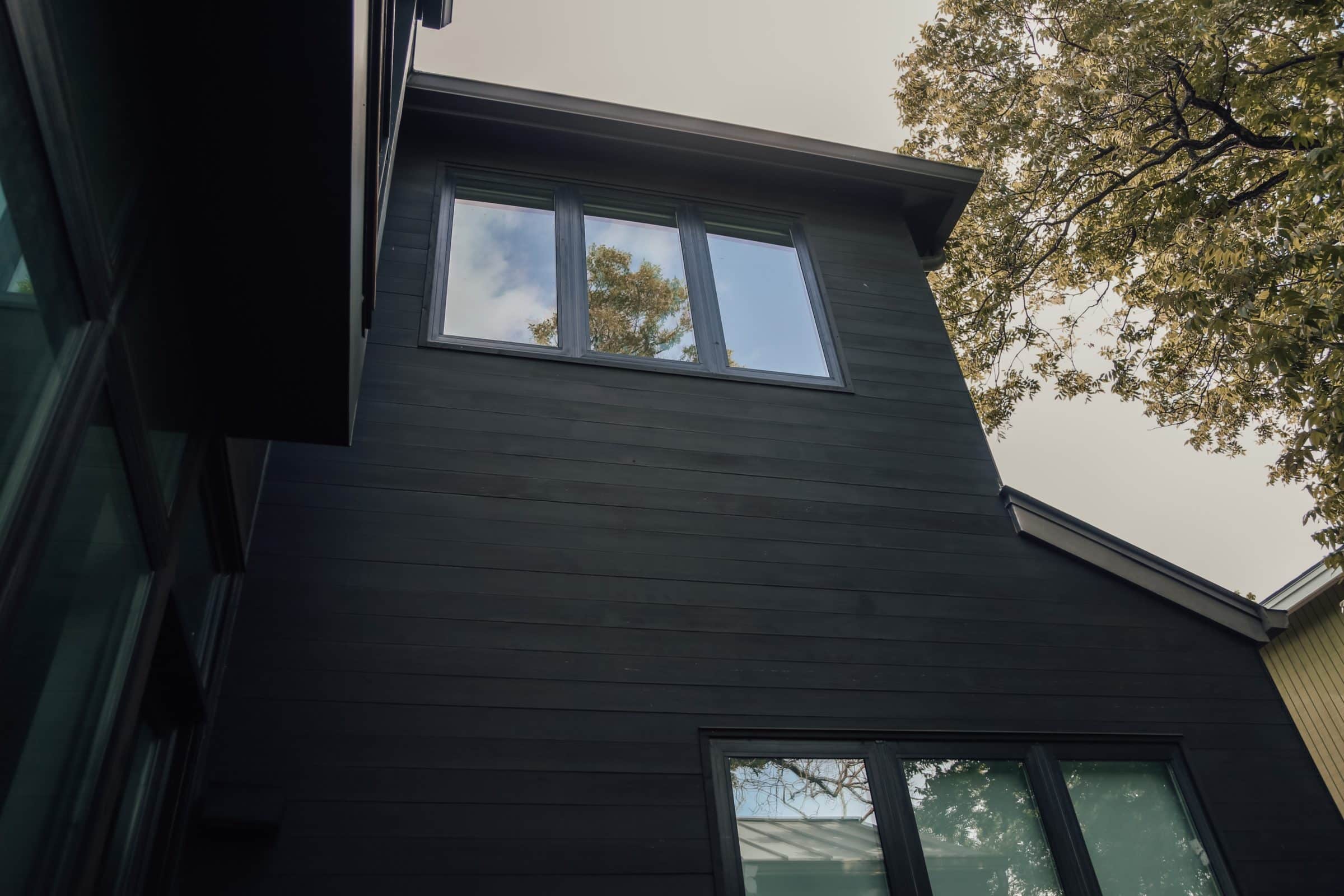Dark architecture and design have become more and more popular over the last few years and it’s easy to see why. There is such a wide variety of ways in which dark, bold tones can be utilised.
We have seen charred timber (otherwise known as Shou Sugi Ban or Yakisugi) being used more each year, as well as dark, bold paints and stains. This has led people to question which is “better”.
So, we have created this post to help you break both options down and see which one is best for you and your project.
Firstly, what is Shou Sugi Ban?
Shou Sugi Ban (or Yakisugi) is the anglicised Japanese term for what we would refer to as ‘charred timber boards’. It is an ancient Japanese architectural technique dating back to around the 17th century.
The technique is to burn Sugi boards (Japanese cedar), cool them off, clean them up and then oil them. Although burning wood may seem counterintuitive, it has an amazing effect on the wood’s strength and durability. It also creates a protective barrier from moisture and insect attack.
It can be used for both internal and external purposes and if treated and installed correctly, can last for up to 80+ years! Although it will inevitably require maintenance, some types of Shou Sugi Ban wood can go 2-4 years without requiring another coat of oil. We will go into further detail about maintenance below.
Black Wood Paint Vs Shou Sugi Ban
The use of black wood paint has also been increasing in popularity recently. Creating a stark contrast between your house and garden helps each of the spaces to stand out. But is using paint the best way to do it?
Well, that depends on many factors. We will break down some of the more common reasons why you might choose one over the other below:
Out top 5 things to consider
1) Budget
For most people, this is the most important thing to consider when deciding between the two. If you already have wood installed and don’t plan on replacing it, when you compare the two, painting your wood will look like the cheaper option.
However, budget really encompasses the rest of the factors below as well, especially maintenance, so consider everything as a whole before reaching for the brushes!
2) Maintenance
For example, if you are after this dark look on a deck (especially one that sees a lot of traffic), you should take into consideration that you will likely have to repaint the wood every year or 2. Even using a premium paint such as our Decking Paint in Black will still require some maintenance to keep it in tip-top condition.
Some of the more budget friendly paints only last a year – sometimes even less! This will inevitably cost you even more in the long run as you will need to spend more money (and time) stripping it back, cleaning everything up and then reapplying the paint.
Shou Sugi Ban can seem an expensive option, but when you take maintenance into account, it could work out around the same or perhaps even cheaper. It depends on the type of wood used, but Shou Sugi Ban usually requires a maintenance coat of oil once every 2-4 years. It depends on you and your wants/needs are.
3) Sustainability
Sustainability and being more eco-friendly are becoming more and more important to a lot of us. If this is something that concerns you, Shou Sugi Ban is a very green way of finishing and protecting your wood. Although a small amount of CO2 is emitted during the charring process, there is then no need for any harmful chemicals to be used. The only additional product is a coating of natural oil (usually linseed) every few years or so.
What’s better is that if you ever wanted/needed to replace a board, it can just be recycled.
Different paints have different levels of VOC (Volatile Organic Compounds) which can be harmful upon exposure to them. Opting for an eco-friendly, low VOC paint is a better option, so long as disposal/storage is properly carried out.
4) Aesthetics
At first glance, you may not think that there is that much of a difference between the two aesthetically. However, once you have had a few moments, you will see that Shou Sugi Ban highlights the woods’ natural beauty by pronouncing some of the woodgrain. Plus, depending on the level of burn, you could also have ‘chunky’ looking charring. This can add wonderful unique texture and dimension.
Paint, on the other hand, will cover most of the wood grain. Which for some may be exactly what you are looking for. Or, perhaps you just prefer a more neat and uniform finish.
5) Replacement not necessary
If you already have a wood structure such as cladding, fencing or a garden deck installed which is in good condition, you may not want/need to replace it. As such, painting it could be the best option for you.
That’s not to say that you couldn’t remove the boards and try Shou Sugi Ban out for yourself! However, if you are not one for messing with fire, paint might be the way forward for you.
So there you have it, we hope you found this post on Black Wood Paint Vs Shou Sugi Ban helpful.
If you have any other tips, tricks or advice, please feel free to leave them in the comments below. We love hearing from you!
Want to keep up with all things Owatrol? Why not follow us on social media? You can find us on Facebook, Twitter, Instagram and Pinterest at @owatroluk or the hashtag #owatroluk












